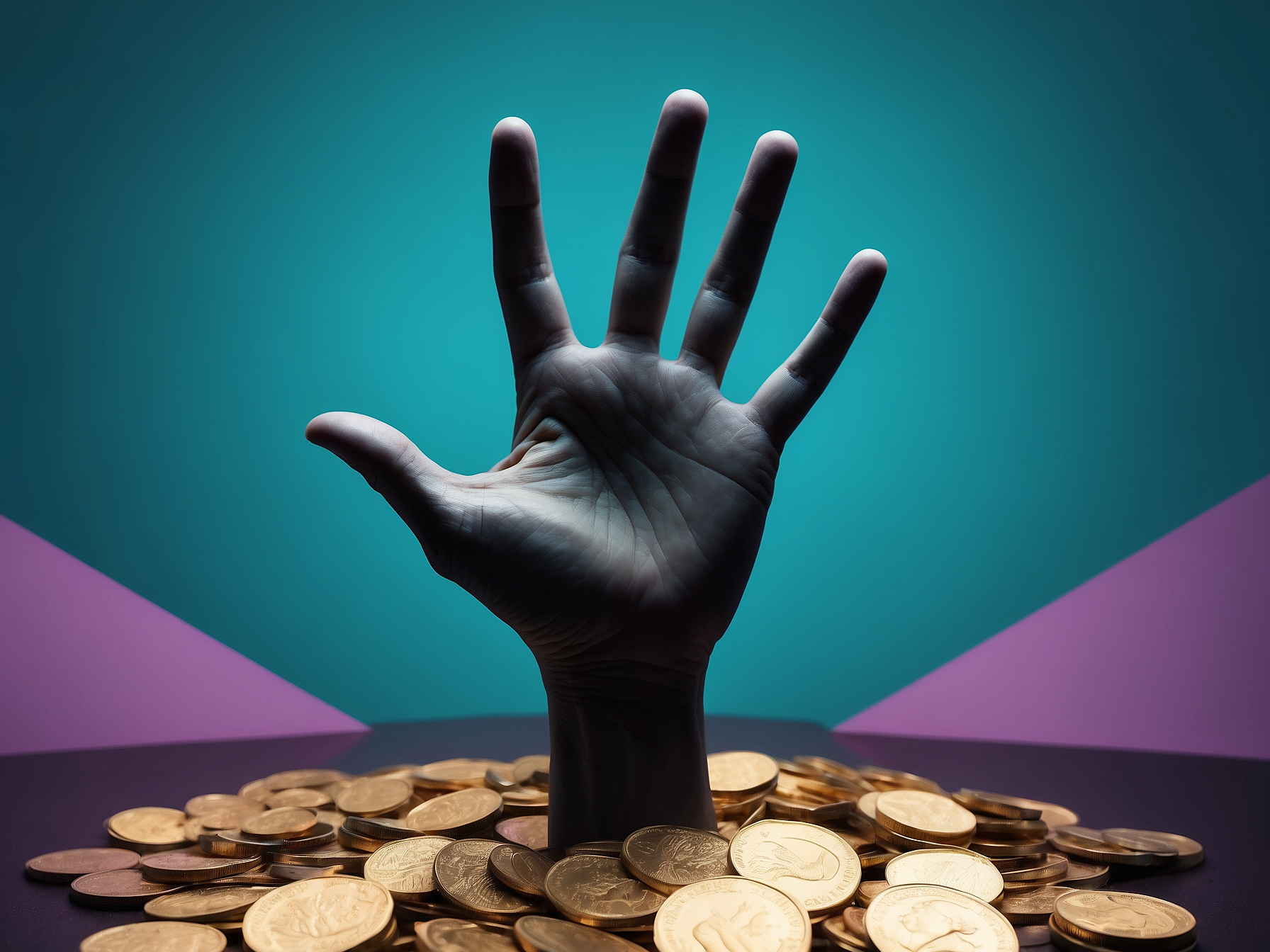Ever felt like playing a game where the rules are made up, and the points don’t matter? Welcome to the wild world of unregulated markets. Let’s dive into what these markets are all about, see if they’re the same as the infamous black market (spoiler alert: they’re not exactly twins), and peek at some real-life examples that’ll make you raise an eyebrow or two.
See also: What is a Coordinated Market Economy? Definition and Examples
What is an Unregulated Market?
Imagine a marketplace where the government’s playing hide and seek—and they’re really good at hiding. That’s an unregulated market for you. In simple terms, it’s a market free from the usual government rules and regulations. Think of it as the Wild West of economics: no sheriffs, no deputies, just buyers and sellers trying to make a deal.
This lack of oversight means that supply and demand are the ultimate shot callers. Traders set the rules, prices fluctuate like a roller coaster, and quality… well, let’s just say it’s a mixed bag. The unregulated market is often dubbed a free market, but hold your horses—we’re not diving into a full-blown capitalism debate here.
In these markets, you won’t find the government’s fingerprints anywhere. No price controls, no quality checks, no tariffs, nada. It’s a laissez-faire paradise—or nightmare, depending on how you look at it.
- Supply and Demand: The only laws that matter.
- Self-Regulation: Traders make up the rules as they go.
- Minimal Oversight: Government intervention is either minimal or non-existent.
But before you start thinking this sounds like a capitalist utopia, remember that unregulated markets can come with a whole suitcase of issues—like unstandardized prices and questionable product quality. It’s a bit like buying sushi from a gas station: proceed with caution.
The Unregulated Market Explained
Alright, let’s break it down without putting you to sleep. An unregulated market isn’t just a free-for-all; it’s a place where the usual referees—the government agencies—are off-duty. This means businesses can produce what they want, set their own prices, and operate on their own terms.
Now, this doesn’t mean everything is chaotic (okay, maybe a little). But it does mean that the usual safety nets and consumer protections might not be in place. It’s like driving without a seatbelt—you might be fine, but if something goes wrong, you’re on your own.
In most cases, unregulated markets pop up in capitalist and mixed economies. Why? Because these economic systems allow private individuals and companies to own property and control production. The government’s role? More of a spectator than a player.
Some folks even call capitalism an unregulated market economy since private businesses are running the show. They handle supply and demand, set prices, and decide what gets produced—all without a nanny-state looking over their shoulder.
But here’s the kicker: unregulated doesn’t always mean illegal. It’s more about the absence of government-imposed rules rather than a hotbed of criminal activity. We’ll get into that messy distinction when we talk about black markets.
See also: Advantages of a Free Market Economy
Unregulated Market Scenario
Let’s paint a picture, shall we?
Meet Andrew. He’s an enterprising guy who decides to turn his garage into a workshop selling mechanical tools to his neighbors. At first, he’s just looking to make a few bucks on the side. But then, things take off faster than a rocket with a caffeine addiction.
His tools become the talk of the town. Encouraged by his success, Andrew decides to expand his business to the entire city. But there’s a catch—lots of competitors are already swimming in that pond.
Not one to be deterred, Andrew starts offering discounts that would make a bargain hunter swoon. His competitors? They can’t keep up. One by one, they bow out or get bought out. Andrew’s little garage operation turns into a nationwide monopoly in a blink.
With great power comes… well, in Andrew’s case, some shady dealings. He starts underpaying his workers and cozying up to government officials to keep any potential rivals at bay. Human rights activists catch wind of his antics, and before you know it, Andrew’s facing the music in court.
He’s found guilty and given a choice: cough up a hefty fine or enjoy a lengthy vacation behind bars. Not exactly the entrepreneurial dream he started with.
Moral of the story? Unregulated markets can lead to monopolies and abuses of power faster than you can say “cha-ching.”

Unregulated Market vs. Black Market
Time to tackle the elephant in the room: Is an unregulated market the same as a black market? Short answer: Nope. Long answer: Let’s get into it.
While both markets operate outside government regulations, the key difference lies in legality. Unregulated markets aren’t necessarily illegal—they’re just lacking in oversight. Black markets, on the other hand, are illegal by definition. They’re the shadowy corners where illicit goods and services are traded under the table.
Black markets often emerge when the government tries to control prices or slaps heavy taxes on certain goods. People looking to dodge these controls or save a buck turn to alternative channels. For example:
- High Taxes: When the government heavily taxes cigarettes, a black market might emerge selling them at lower prices.
- Price Controls: If fuel prices are capped, sellers might offer it at higher prices under the radar to those willing to pay.
Governments usually frown upon black markets (shocking, I know). They set up enforcement agencies to sniff out illegal transactions and slap penalties on those involved. Black markets can hurt economies by dodging taxes and making it tough to gauge the true scale of economic activity.
So, while unregulated markets operate in legal grey areas due to a lack of rules, black markets are operating outside the law entirely. It’s the difference between jaywalking and grand theft auto.
See also: How Did the Industrial Revolution Change Society?
Characteristics of an Unregulated Market
So, what makes an unregulated market tick? Let’s break down its main features:
- Private Ownership of Resources
- Prosperous (but Uneven) Financial Markets
- Freedom to Participate
- Freedom of Choice
- Self-Interest Motive
- Competition
- Limited or No Government Interference
Private Ownership of Resources
In unregulated markets, the private sector holds the keys to the kingdom. Individuals and companies own resources and control production, distribution, and exchange. They decide what to make, how to make it, and who to sell it to. It’s like owning your own island—but without the pesky rules about coconut export quotas.
Prosperous (but Uneven) Financial Markets
Financial markets can thrive in unregulated environments, but prosperity isn’t evenly spread. Some businesses hit the jackpot, while others can’t catch a break. It’s a high-stakes game where the winners can take it all—and the losers might be left scratching their heads.
Freedom to Participate
No gatekeepers here. Anyone can jump into the market fray. Want to start selling homemade alpaca wool scarves at quadruple the average price? Go for it. Consumers and producers alike have the freedom to buy or sell as much—or as little—as they want.
Freedom of Choice
The sky’s the limit when it comes to choices. Businesses aren’t boxed in by regulations telling them what they can or can’t offer. Consumers get to decide where to spend their hard-earned cash, and producers can pivot faster than a caffeinated figure skater.

Self-Interest Motive
Let’s be real—everyone’s in it for themselves. And in an unregulated market, that’s not just acceptable; it’s expected. Producers aim to maximize profits, and consumers hunt for the best deals. This self-interest can drive innovation and efficiency, but it can also lead to some less-than-stellar business practices if left unchecked.
Competition
Competition is fierce. With no barriers to entry, new players can enter the market and shake things up. This keeps businesses on their toes, striving to offer better products and services. But there’s a flip side: without regulations, some companies might resort to underhanded tactics to edge out the competition.
Limited or No Government Interference
This is the big one. The government’s role is minimal, giving businesses free rein to operate as they see fit. While this can spur economic growth and innovation, it can also lead to imbalances and abuses if things get out of hand.
Unregulated Market Examples
Ready for some real-world examples? Let’s dive in.
- Bitcoin and Cryptocurrency
- Markets During the Industrial Revolution
Bitcoin and Cryptocurrency
Ah, Bitcoin—the digital gold rush of the 21st century. Since its inception, Bitcoin has been the poster child for unregulated markets. Governments worldwide are still scratching their heads trying to figure out how to tame this digital beast.
Why is Bitcoin unregulated?
- Decentralization: No central authority controls it.
- Anonymity: Users are identified by wallet addresses, not personal info.
- Borderless Transactions: Money moves across borders without the usual red tape.
This lack of regulation has its perks—like lower transaction fees and freedom from traditional banking systems. But it also opens the door for less savory activities.
The Dark Side:
- Capital Flight: People can move large sums out of countries with strict capital controls.
- Illegal Activities: The anonymity attracts criminals for money laundering, black market transactions, and more.
For instance, in China, citizens are restricted in how much foreign currency they can buy annually. Bitcoin offers a workaround, allowing people to skirt these regulations and move money abroad.
Then there’s the infamous Silk Road case—a dark web marketplace where users bought and sold illegal goods using Bitcoin. It took years for authorities to shut it down, highlighting the challenges of regulating such a decentralized platform.
Markets During the Industrial Revolution
Time for a history lesson—but don’t worry, we’ll keep it snappy.
The Industrial Revolution (roughly 1760 to 1840) was a period of massive economic change. New machines and manufacturing processes transformed industries, and markets were largely unregulated.
What happened?
- Rapid Industrialization: Factories sprouted up like weeds.
- Urbanization: People flocked to cities for work.
- Lax Labor Laws: Workers faced long hours, low pay, and dangerous conditions.

Without government regulations, companies could—and did—push the limits of what was acceptable. Pollution soared, workers suffered, and the gap between the rich and poor widened like never before.
Eventually, the outcry led to the formation of labor unions and the introduction of regulations to protect workers and the environment. But during that unregulated period, the market was a free-for-all with both incredible advancements and significant societal costs.
See also: Crony Capitalism (Cronyism)
